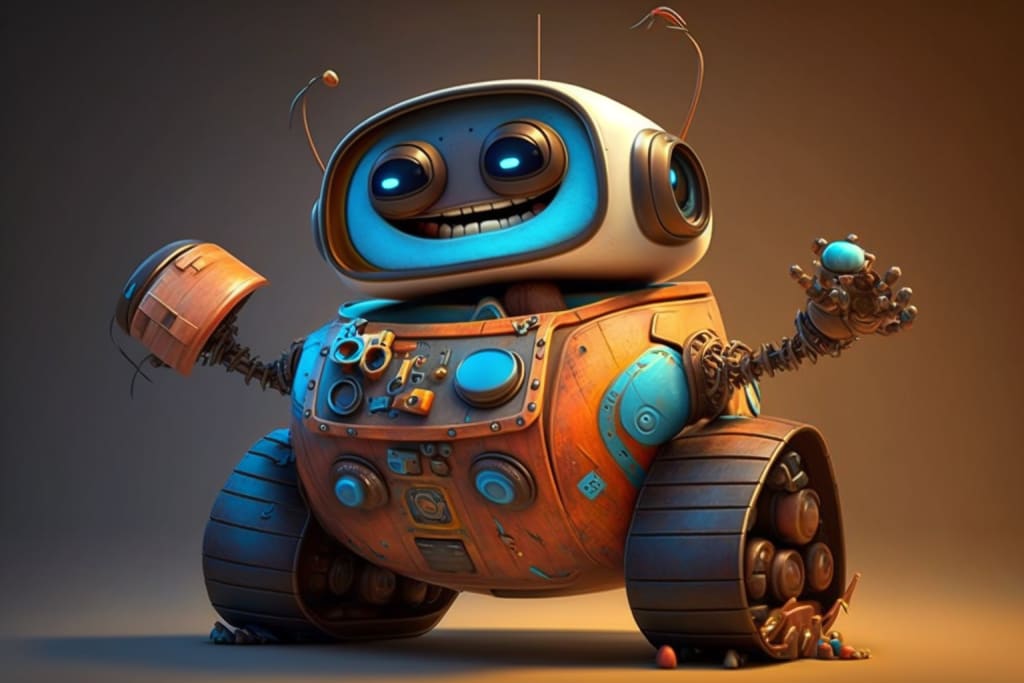What is the difference between AI and robots?
Or isn't there any difference?

This story was sponsored by AI-Info.org
The use of artificial intelligence (AI) and robots are two concepts that are often used interchangeably by many. Although both AI and robots have the potential to transform our lives, they are two distinct technologies. It is important to understand the difference between AI and robots in order to appreciate their respective roles in advancing technology. This article will explore the difference between AI and robots and how each of these technologies can be applied in different contexts.
Definition of AI
AI stands for artificial intelligence, and it refers to technology that can learn, adapt, and make decisions autonomously. AI is powered by algorithms which enable a computer system to process information in order to mimic the behavior of humans by recognizing patterns, understanding language and making decisions. AI is different from robots because while AI systems are designed to imitate human behavior, they do not have physical bodies like robots do. Robots are programmed machines that follow specific commands or instructions to complete tasks efficiently. While robots use sensors and actuators as input/output devices to interact with their environment, AI does not need any such interface; it can learn based on data input without being instructed how to do so. In addition, robots rely on programming for their functioning whereas AI systems require no specific coding; instead they use machine learning techniques such as deep learning or reinforcement learning which allow them to become smarter over time.
Definition of Robots
Robots are physical machines that are programmed to autonomously carry out a variety of tasks. They can be used for repetitive tasks, such as welding or painting, or more complex operations like navigating an environment and interacting with its inhabitants. Robots are able to interact with their surroundings because they can sense their environment (via sensors) and process data from these sensors in order to make decisions about how to act in the given context.
In contrast, artificial intelligence (AI) is a system of computer software that can learn from its own experience and adapt itself over time. AI is capable of performing tasks that would otherwise require human intelligence such as visual perception, language translation and decision making. Unlike robots, AI systems do not rely on physical machines but rather use algorithms and data sets which allows them to easily scale up their performance over time. Furthermore, AI systems have greater flexibility in terms of what they can respond to since they don't need to be pre-programmed for particular scenarios; instead they can adjust their behavior depending on the input it receives.
AI and Robots
AI stands for Artificial Intelligence, a technology that computer systems use to simulate human intelligence. AI is able to learn from experience and apply logic and rules to solve problems. Robots, on the other hand, are physical machines that can be programmed with AI algorithms and rules to carry out specific tasks autonomously. While robots may include AI capabilities such as natural language processing (NLP), they are typically more limited in their range of learning compared to AI. Moreover, unlike robots, AI does not need a physical body or form in order to perform tasks.
Robots have been used extensively in industrial automation for decades now, performing repetitive manufacturing processes like welding and assembly line operations with greater accuracy than humans. The introduction of artificial intelligence into robotics has allowed robots to take on more complex tasks - such as facial recognition or autonomous navigation - by giving them the ability to interpret data from their environment and make decisions based on this data. This type of automation is becoming increasingly common throughout many industries today as companies look for ways to streamline production processes while reducing costs at the same time.
Similarities between AI and Robots
One similarity between Artificial Intelligence (AI) and robots is that both are able to learn from their environment and make decisions based on the data they encounter. Both AI and robots use algorithms to analyze data, identify patterns, and make decisions. This allows them to adapt their behavior in order to achieve their goals more efficiently. For example, a robot can be programmed with an algorithm that will help it recognize objects in its environment, while an AI system can learn how to play a game by analyzing a dataset of moves made by other players.
Another similarity between AI and robots is that both are capable of interacting with humans in various ways. Robots may be used for tasks such as cleaning floors or manufacturing goods, while AI can be used for things like voice recognition or facial recognition applications. In both cases, these technologies allow machines to interact with people more efficiently than ever before.
Finally, both AI and robots rely on sensors in order to collect information about the world around them - such as location data or temperature readings - which can then be used by the systems themselves to take certain actions based on what they have learned from this information. This allows these machines to better understand their environment so they can make smarter decisions when interacting with humans or performing tasks autonomously.
Differences between AI and Robots
AI (Artificial Intelligence) and robots are often used interchangeably, but they are different concepts. AI is a form of computer science that enables machines to think and act like humans. It is a program that typically uses algorithms to solve problems, understand natural language, classify data or process images. AI can be used in robots but it is not necessary for robotics.
Robots are physical machines that use motors and sensors to interact with their environment. They are programmed with specific tasks and behaviors which they execute autonomously or semi-autonomously based on the programming given by engineers. Robots cannot think independently like AI can; instead, they rely on commands from an operator or pre-programmed instructions to complete tasks. Additionally, robots typically have limited sensory abilities compared to those of AI-based systems, as most don't possess vision systems or voice recognition capabilities without the presence of AI technology.
Uses for AI and Robots
AI (Artificial Intelligence) is a system of computer intelligence that is designed to simulate and replicate human behavior. Robots are physical machines, typically with mechanical parts that are programmed to interact with their environment. AI can be used for data processing tasks such as analyzing large amounts of data quickly and accurately, whereas robots can be used for physical labor in hazardous or difficult conditions.
Robots can also be useful for activities like manufacturing, medical surgery, and even space exploration where they can work autonomously in extreme environments without any human involvement. Furthermore, AI-driven robots have the potential to support humans by taking over mundane tasks or helping with repetitive jobs such as cleaning or farming.
AI and robots are both essential components of the modern world; AI enables machines to think more intelligently while robots provide tangible solutions to many practical problems. As technology advances, both are likely to become increasingly important tools in industries ranging from healthcare and agriculture to transportation and manufacturing.
Conclusion: Benefits of Both
The primary benefit of both AI and robots is their ability to automate tasks and processes. AI can analyze data, detect patterns, and make decisions based on these patterns, allowing for faster decision-making and more efficient use of resources. Robots are able to physically act on the environment, replacing human labor in dangerous environments or difficult tasks with precision and accuracy.
Another important benefit of both AI and robots is their potential for cost savings. By eliminating or reducing manual labor costs through automation, companies can save significantly in terms of labor costs while still achieving the same level of productivity as before. Additionally, by automating processes that require human intervention such as customer service or data entry, businesses can decrease operational expenses while improving customer satisfaction levels.
Finally, both AI and robots allow us to improve safety in a variety of ways by providing additional layers of protection against accidents or errors that could occur during a production process. For example, robotic arms used in manufacturing may be equipped with sensors that detect any changes in their surroundings which could lead to a malfunction or injury if left unchecked. Similarly, AI-based systems can be programmed to monitor employee behavior so they do not engage in activities that could put themselves or others at risk.
About the Creator
Patrick Dihr
I'm a AI enthusiast and interested in all that the future might bring. But I am definitely not blindly relying on AI and that's why I also ask critical questions. The earlier I use the tools the better I am prepared for what is comming.






Comments (1)
For some reason, this story is doubled but I cannot delete it...